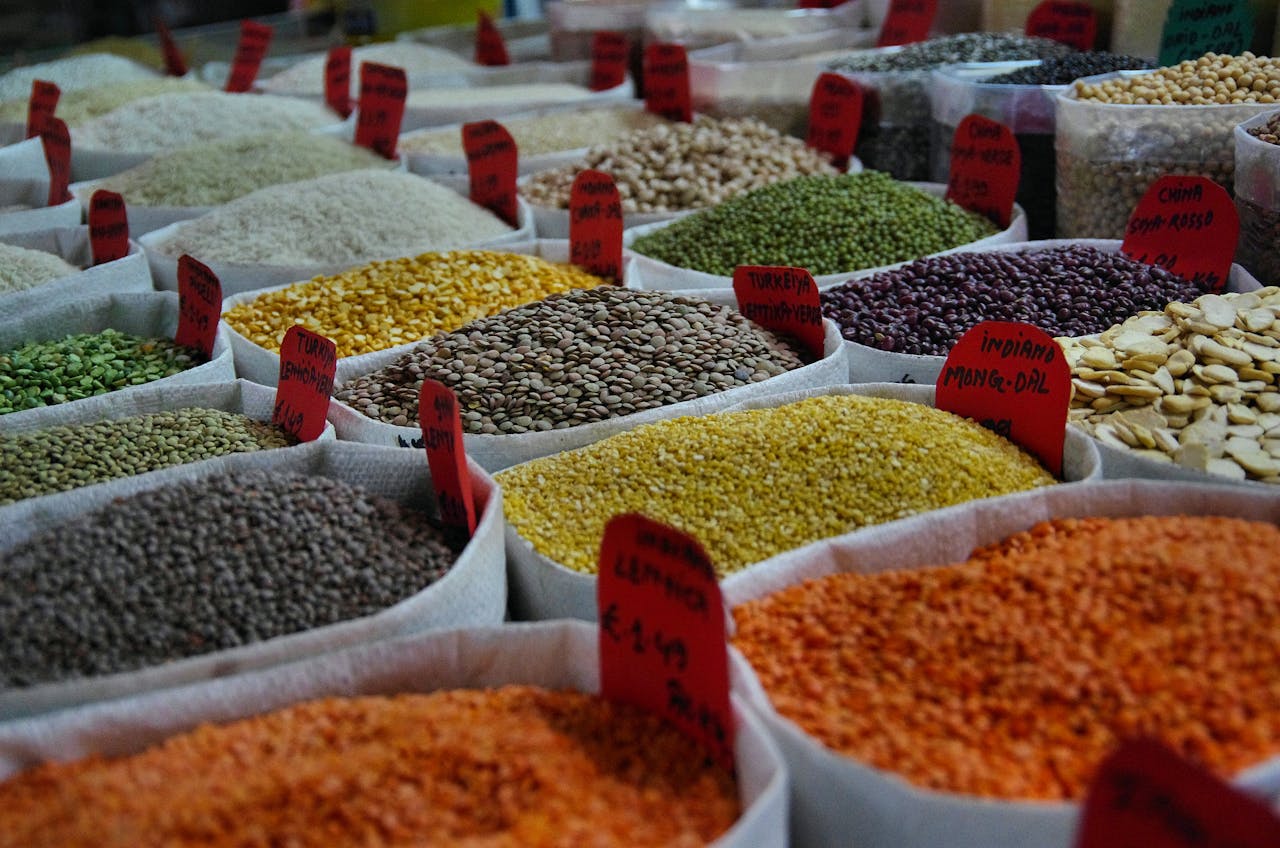Introductions
🌰 India’s nut industry is cracking open new opportunities for global trade, and you could be part of this thriving market. From the familiar crunch of almonds to the exotic pop of fox nuts, Indian nuts are taking the world by storm.
But here’s the real kicker: navigating the export process can be as tough as cracking a walnut without a nutcracker. 😓 Regulations, standards, logistics – it’s enough to make your head spin faster than a cashew in a roaster. Don’t let these challenges leave you feeling like you’re going nuts!
Fear not, aspiring nut exporters! This guide is your golden ticket to understanding the ins and outs of exporting nuts and fox nuts from India. We’ll shell out all the details you need, from export regulations to key markets, and even reveal the hidden opportunities waiting to be cracked open. So, ready to go nuts with us? Let’s dive into the world of Indian nut exports and discover how you can turn these tiny treasures into big business! 🌍💼
Overview of Indian Nut Exports
India’s nut export industry plays a significant role in the country’s agricultural exports, contributing substantially to its economy. The diverse range of nuts produced in India caters to a growing global demand, making it a key player in the international nut market.
A. Types of nuts exported from India
India exports a variety of nuts, each with its unique flavors and nutritional benefits. Here’s a list of the most popular nuts exported from India:
1. Cashews
2. Almonds
3. Walnuts
4. Pistachios
5. Peanuts
6. Fox nuts (Makhana)
B. Global demand for Indian nuts
The global demand for Indian nuts has been steadily increasing due to several factors: Growing awareness of health benefits
Rising popularity of plant-based diets
Increasing disposable incomes in developing countries
| Year | Export Value (in million USD) | Growth Rate (%) |
| 2018 | 1,500 | – |
| 2019 | 1,650 | 10% |
| 2020 | 1,800 | 9% |
| 2021 | 2,000 | 11 |
C. Economic importance of nut exports
Nut exports significantly contribute to India’s agricultural export revenue and overall economic growth. The industry:
1. Provides employment to millions of farmers and workers
2. Attracts foreign investment in processing and packaging facilities
3. Encourages technological advancements in cultivation and processing 4. Helps in diversifying India’s export basket
With the growing global demand for nuts, India’s nut export industry is poised for further expansion, offering numerous opportunities for farmers, processors, and exporters alike. Next, we’ll delve deeper into the specific characteristics of nuts and fox nuts, exploring their unique properties and market appeal.
Understanding Nuts and FoxNuts
A. Growing regions in India
India’s diverse climate and geographical conditions make it an ideal place for growing various nuts and foxnuts. Here’s a breakdown of the major growing regions:
| Nut/FoxNut | Growing Regions |
| Cashews | Kerala, Karnataka, Goa, Maharashtra, Tamil Nadu |
| Almonds | Jammu & Kashmir, Himachal Pradesh |
| Walnuts | Jammu & Kashmir, Uttarakhand, Himachal Pradesh |
| FoxNuts | Bihar, Madhya Pradesh, Uttar Pradesh, West Bengal |
Breakdown of the major growing region
B. Popular varieties in export markets
Several Indian nut varieties are highly sought after in international markets:
Cashews: W-180, W-210, W-240
Almonds: Nonpareil, California Paper Shell
Walnuts: Chandler, Howard, Franquette
FoxNuts: Makhana (Puffed FoxNuts)
C. Unique properties of FoxNuts
FoxNuts, also known as Makhana or Lotus Seeds, possess several unique characteristics: 1. Low calorie and high protein content
2. Gluten-free and easily digestible
3. Versatile for use in snacks, desserts, and traditional medicine 4. Long shelf life when properly stored
D. Nutritional benefits of nuts
Indian nuts offer a wide range of health benefits: Cashews: Rich in iron, zinc, and magnesium
Almonds: High in vitamin E and healthy fats
Walnuts: Excellent source of omega-3 fatty acids FoxNuts: Low in fat, high in antioxidants and minerals
These nutritional properties make Indian nuts and foxnuts attractive to health-conscious consumers worldwide, driving their demand in export markets.
Now that we’ve explored the unique characteristics of Indian nuts and foxnuts, let’s delve into the export regulations and standards that govern their international trade.
Export Regulations and Standards
Now that we understand the basics of nuts and foxnuts, let’s delve into the crucial export regulations and standards that govern their international trade.
A. International certifications
To export nuts and foxnuts from India, several international certifications are required: HACCP (Hazard Analysis and Critical Control Points)
ISO 22000 (Food Safety Management)
BRC (British Retail Consortium) Global Standard for Food Safety
USFDA (United States Food and Drug Administration) approval
These certifications ensure that the exported products meet global food safety and quality standards.
B. Packaging and labeling requirements
Proper packaging and labeling are essential for successful nut and foxnut exports:
| Packaging Requirements | Labeling Requirements |
| Moisture-proof containers | Product name and description |
| Tamper-evident seals | Net weight and volume |
| Food-grade materials | Country of origin |
| Vacuum-sealed bags for extended shelf life | Nutritional information |
| Appropriate size options for different markets | Allergen warnings |
C. Quality control measures
Maintaining high quality is crucial for Indian nut and foxnut exports. Key quality control measures include: 1. Regular pesticide residue testing
2. Aflatoxin level monitoring
3. Moisture content checks
4. Size grading and sorting
5. Implementation of Good Manufacturing Practices (GMP)
D. Indian government policies on nut exports
The Indian government has implemented several policies to promote and regulate nut exports: Export promotion schemes under the Foreign Trade Policy
Minimum Export Price (MEP) regulations for certain nuts
Quality control orders issued by the Food Safety and Standards Authority of India (FSSAI) Assistance for setting up processing units through various schemes
These regulations and standards ensure that Indian nut and foxnut exports meet international requirements, maintain high quality, and remain competitive in the global market. With these guidelines in place, exporters can confidently navigate the complex world of international trade.
Key Export Markets
As we delve into the key export markets for Indian nuts and foxnuts, it’s essential to understand the global landscape and opportunities that await exporters.
A. Market trends and preferences
The global market for nuts and foxnuts is experiencing significant growth, driven by increasing health consciousness and the rising popularity of plant-based diets. Consumers are increasingly seeking out nutritious snack options, making nuts and foxnuts an attractive choice.
| Trend | Description |
| Health focus | Growing demand for nutrient-rich, natural snacks |
| Convenience | Preference for on-the-go, portable snack options |
| Flavor innovation | Interest in unique and exotic flavours |
| Sustainability | Increasing importance of eco-friendly packaging and ethical sourcing |
B. Competitive landscape
The nut and foxnut export market is highly competitive, with several countries vying for market share. India faces competition from other major nut-producing nations such as the United States, Turkey, and China. However, India’s unique offering of foxnuts sets it apart in the global market.
Key competitive factors include:
Quality and taste of products
Price competitiveness
Consistency in supply
Adherence to international food safety standards Packaging and branding
C. Top importing countries
The top importing countries for Indian nuts and foxnuts vary depending on the specific product. However, some key markets include:
1. United States
2. European Union (particularly Germany, Netherlands, and UK) 3. United Arab Emirates 4. Saudi Arabia 5. Japan
These markets offer significant opportunities for Indian exporters due to their high consumption rates and appreciation for quality nuts and foxnuts. As we move forward, we’ll explore the export process and logistics involved in getting these products to these lucrative markets.
Concluding your blog post isn’t just about wrapping things up – it’s your final opportunity to leave a strong impact. Summarize the key takeaways from your post, reinforcing your main points. If relevant, provide actionable solutions or thought-provoking questions to keep readers thinking beyond the post. Encourage engagement by inviting comments, questions, or sharing. A well-crafted conclusion should linger in your readers’ minds, inspiring them to explore further or apply what they’ve learned.



